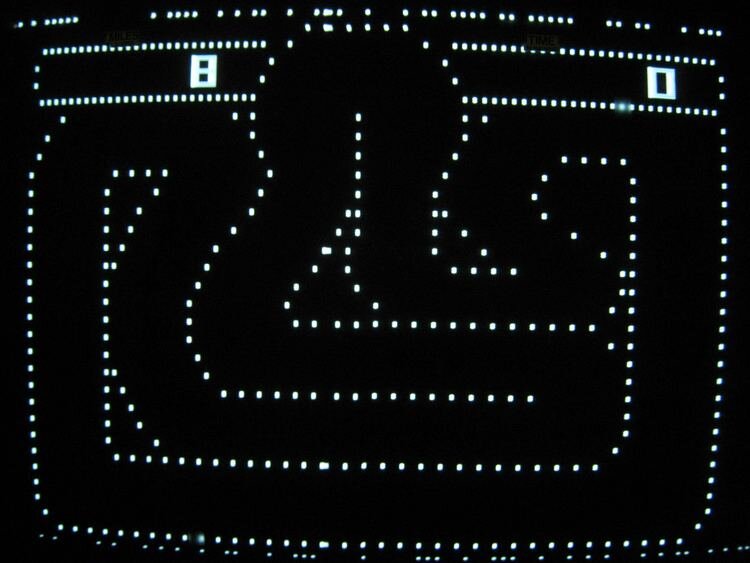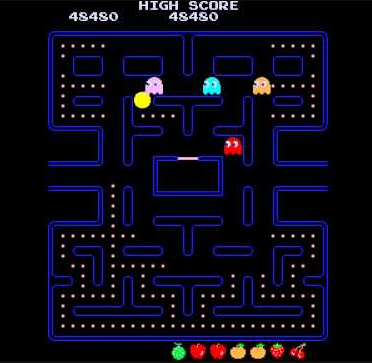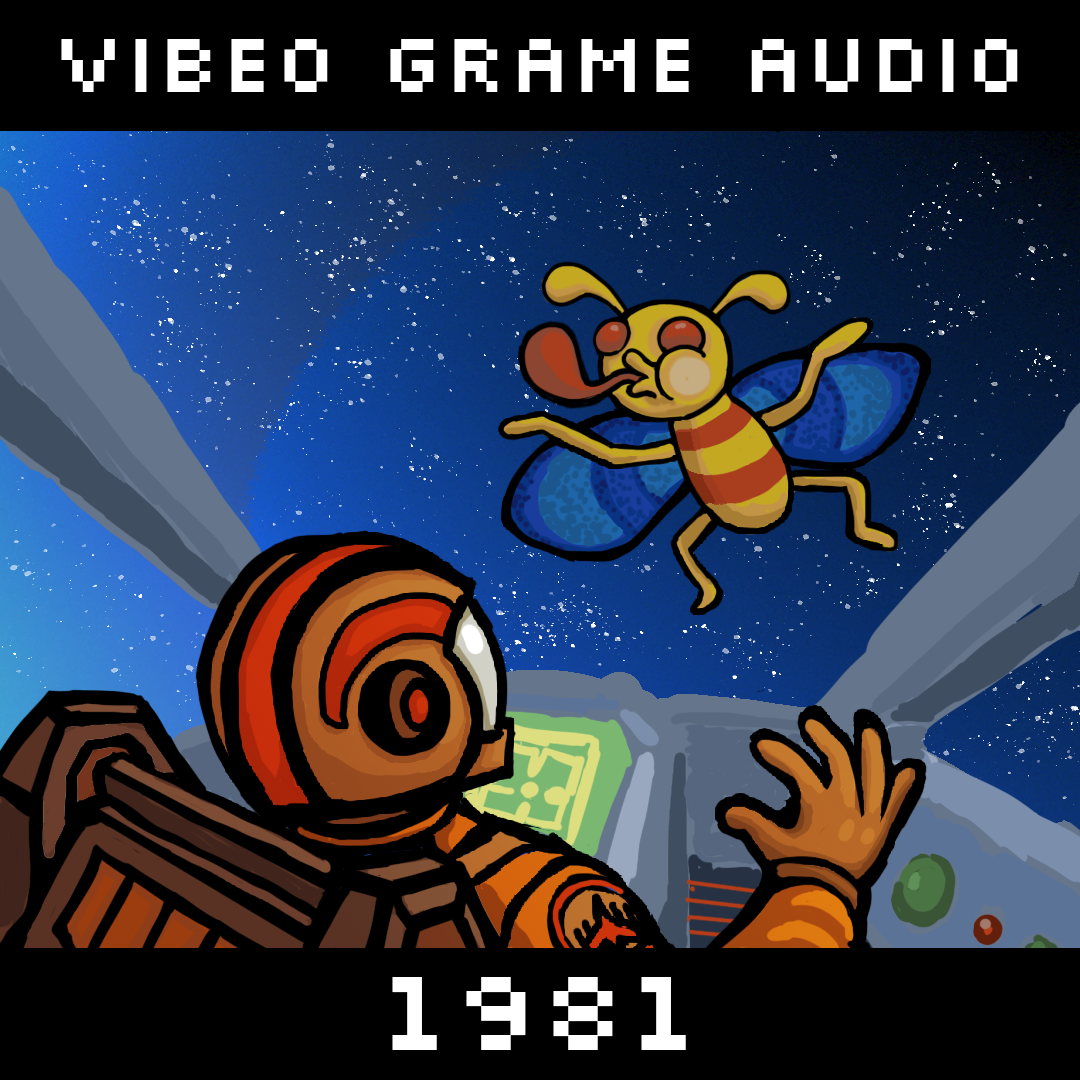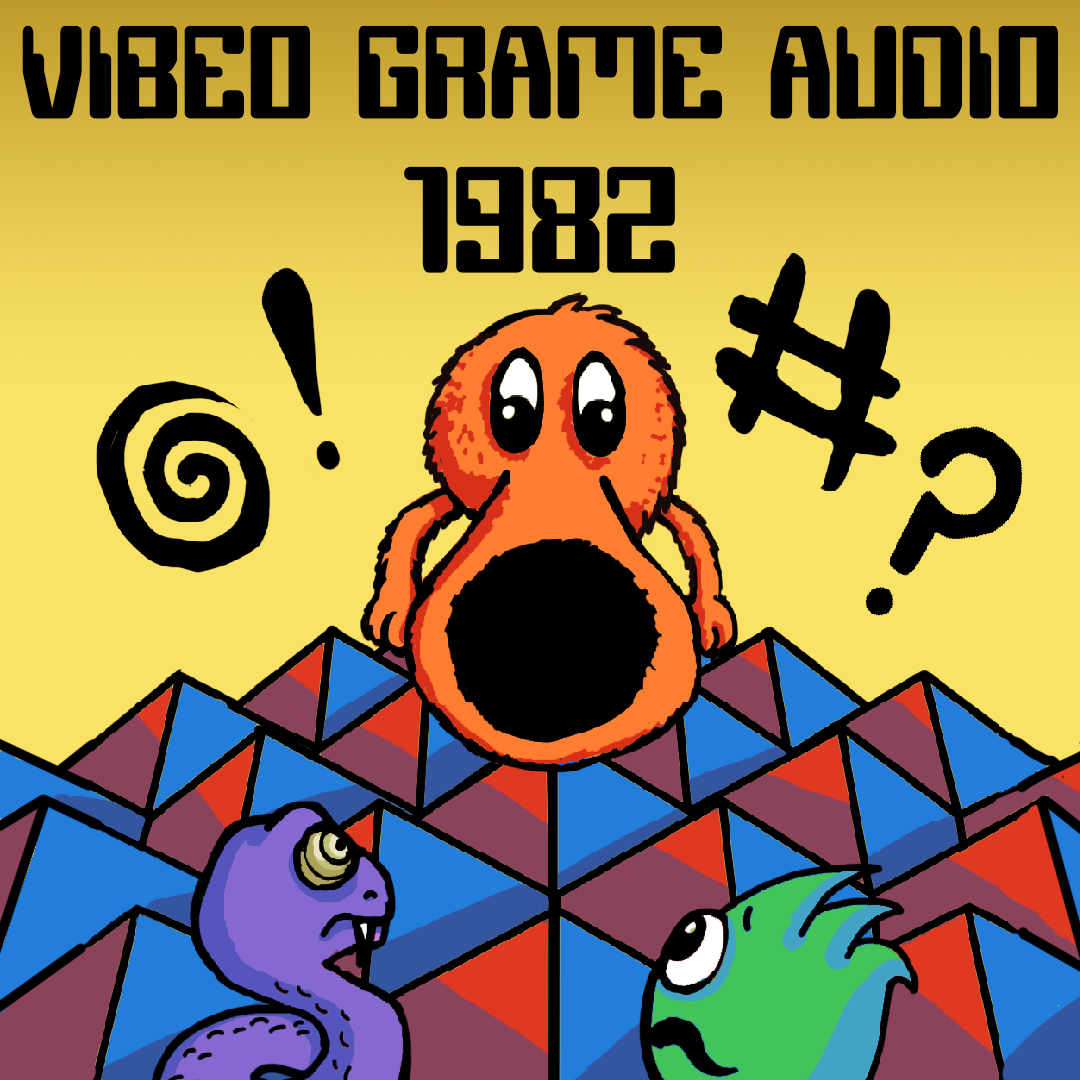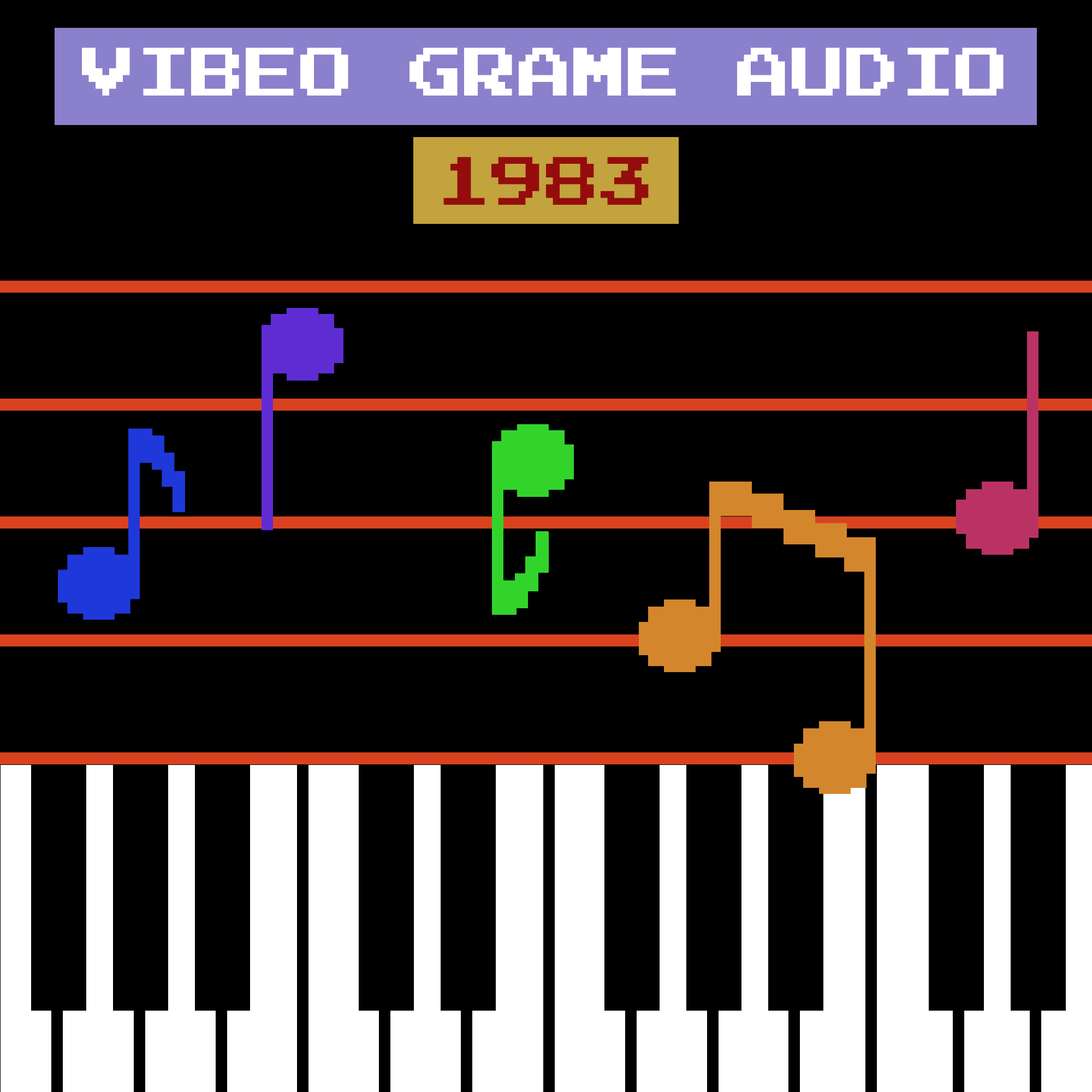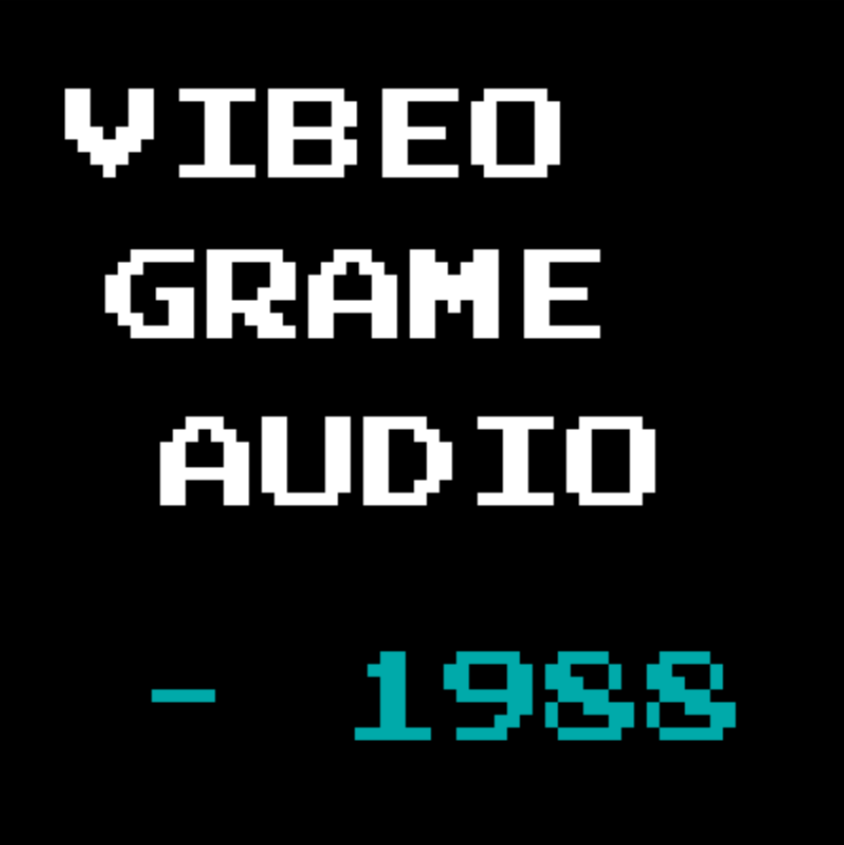Image made by David Matlock (@Empfindsamer)
Do you like Game Awards lists? Do you like Top 10 lists? Would you like to see that, but 40 years out of date? Then this page is for you.
It’s no longer difficult to sell the notion that video game music is art. Not like it was when I was a kid, and video games were those little toys that made ear-shattering bleeps and bloops. The Nintendo didn’t make real music. Real music was Beethoven and George Harrison and Richard Rodgers. And even among the video game music lovers, we tended to sort of go along with that. We said that of course the chiptunes of the 80s and 90s weren’t real music, but at some point once Hans Zimmer got involved the medium became real music. Eventually it got good enough to sound like the real thing and get the approval from the right people.
But I think the very instant video games incorporated sound at all, that sound was real music. It was art. Sure, primitively composed and produced compared to now, but that’s a matter of perspective. Most of the time, the sound was primitive due to the more primitive hardware. The composers would have given us more, if they could. You wouldn’t blame a solo violinist for not sounding like the New York Philharmonic.
Anyway, I quite like the retro stuff as it is, and I don’t feel the need to defend it because it speaks for itself. So why not honor my favorites in a top ten list? I’ll go year by year with what I think are the best examples of audio in video games. Note I say “audio” and not “music,” as I want to also consider sound design. Nowadays “sound design” and “music composition” are considered as separate disciplines, usually being done by separate teams, but early games did not make the distinction.
For this first list I’m not sticking to a single year. Gaming was still in its infancy and only a few titles at the most were released each year. So to make a substantial list, I’m including everything up through the year 1980. These games do not have “soundtracks” in any form we’re familiar with now. Instead I’ll link to video playthroughs so you can experience the sound in action. On to the list!
#10: Gun Fight (1975)
Yeah, this is what games looked like in the 70s, before they invented good graphics. Gun Fight is a simple arcade game for two players: move your cowboy up and down and try to shoot the other one.
The only notable thing about Gun Fight these days is its place as the first video game which had any music at all: a single stinger. (A “stinger” in video games is a short, non-looping, and almost always non-diegetic track.) Gun Fight’s stinger is not original, however, being an excerpt of the “Funeral March” from Chopin’s Sonata No.2 in Bbm. If you don’t recognize the title, you’ll recognize the tune when you hear it.
Games of the time commonly used public domain music rather than original works. There could be many reasons for this, but most likely it was because no one who made the game was a musician. We’re accustomed now to AAA games being created by teams of hundreds, but games in the 70s were often the work of one, maybe two people. It wasn’t expected that this solo or double act would not only know how to design and code, but also compose original music. Having a dedicated composer for a game wouldn’t become the norm until the mid-80s.
#9: Gran Trak 10 (1974)
Gran Trak 10 might just be the very first racing game ever made, back in 1974. You’d expect it to be extremely primitive, and you’d be right! But its sound design is more advanced than most other games of the 70s.
Getting high-quality playback of recorded audio out of a computer is far more complicated than one would think. It’s the norm for games now, but older games ran on hardware that had very low capacity for sound and music, if any at all. To get something like that to produce the complex waves that mimic acoustic instruments or the human voice takes a lot more than anything in the 70s could handle. So when designing a racing game, the creator of Gran Trak 10 faced the challenge of how to produce the sound of the car’s engine with only the simple sounds available to them on the hardware of the decade.
Unfortunately, I cannot find any good quality recording of this game to get perfectly clean audio from. As I do not have access to the designer’s head to know how they produced the sounds in Gran Trak 10, I can only guess. Perhaps they took the simple beeps and boops of old computers and manipulated them so skillfully as to fool my ears. Or they may have hooked the arcade cabinet up to analog audio speakers and cued playback from a tape, as at least one game from the time did. Whatever the case, I’m blown away by the quality of those racing noises. This game gets a spot on my list.
#8: Berzerk (1980)
In the 70s and 80s, everyone was asking the same question: will robots rise up to murder us all? These days we have the answer, which is: yes, and because we deserve it.
As far as arcade games go, Berzerk was average in most ways. But for voice synthesis, it was a breakthrough. I can’t verify if it was the first game ever to use voice synthesis. Taito’s “Stratovox” also released in 1980, but I don’t know for sure which came first. Ultimately, I don’t care. Berzerk is the more known title and the better implementation of VS. Stratovox is little more than a niche trivia point today.
Voice synthesis is often associated with the blocky, monotone computer speech you hear in games like Berzerk (or movies like War Games), but it has a much bigger history than that. In fact, VS as a general concept had been in development decades before the 80s. It just didn’t make it to video games until Berzerk, for the same hardware limitation reasons we don’t have lots of other nice audio things this far back. And VS hasn’t stopped! Technically, any method by which a computer produces human speech (not simply playing back a single mp3 or such file) is considered VS. Siri and Cortana are modern examples of voice synthesis. And our future will probably be AI-created speech, which is basically what happens when corporations want to impersonate your voice without compensating you, and also want to commit identity theft. So really, the sooner the robots rise up to murder us all the better.
#7: Football (1978)
Okay, there are generally three platforms on which to play video games: Arcades, Home Consoles, and Personal Computers (PC). Football, released in 1978 for the Bally Astrocade, is the only game on this list which is not from an arcade cabinet.
There’s a good reason for this. It’s not because I like arcades. I missed the golden age of the arcades anyway. By the time I was old enough to visit one, they were dying out, so I never really liked them. Imagine my shock when I learned that not only did arcades used to be a place for the cool kids to hang out, but the arcades produced the biggest games with the best tech, shiniest graphics, and cleanest sound. In the 70s and early 80s, arcades were unquestionably on top, with consoles and PCs barely capable of producing any sound, let alone good sound.
Where was I? Right, this is a console game. The Bally Astrocade was one of the only consoles before 1980 which was designed with audio in mind. It came with a whopping three sound channels, each of which produced only square waves. That meant a maximum of three notes playing simultaneously. Not three notes from each channel, no - three total. That’s what the luckiest kids had to listen to after coming home from school, which they walked to, uphill, both ways, in the snow and barefoot.
Few games really took advantage of the sheer power of the Astrocade’s three sound channels, but of those that did, Football did it the best. The game opens with a musical stinger: the tail end of “The Star Spangled Banner.” And the audio innovations didn’t stop at the (very limited) music either! It simulates the roaring of the crowd using pure white noise. Check it out in the link below.
#6: Monaco GP (1979)
This will not be the only Sega arcade to show up on my lists. If you are a child of the 90s like me, you might only know Sega by their home consoles such as the Master System, Genesis, and Dreamcast. And for someone like me who started out with the Super NES, Sega was - sorry to say, Sega fans - out of their depth in the console market.
But in the arcades? They were the best of the best. No one did it like them. Their arcades always had the most advanced tech, the hottest graphics, and the biggest sound. Don’t scoff at the garish colors and simple sprites in that image. Keep in mind the computer running the game didn’t have enough ROM to store all the environments it generated as you drove by. No, those were generated on the fly.
As for sound, Monaco GP may be one of the first games to incorporate sound purely for immersive purposes. Let me try to explain what I mean. Oftentimes sound effects are added to give important feedback to the player. If you turn off the volume and try to play action-heavy games, you’ll find they get harder. When the player performs an action, such as jumping, punching, opening a door, crashing into a wall, sound effects help the brain understand what’s happening. You, the player, see the thing happening and hear the sound the thing should naturally make, so it helps you coordinate your actions as if you were really performing that action in real life. Early games tended to not only use incredibly simple sound effects, but used them only for these purposes.
Monaco GP includes extra sounds that do not necessarily do this. When your car passes other cars close enough, there is an extra whooshing sound. Also, emergency vehicles occasionally appear and pass you, and as they approach and depart, their sirens fade in and out. This extra noise doesn’t help the player coordinate their actions. But it does make you feel like you’re really there. Little things like this help elevate Monaco GP above other racing titles of the era.
#5: Lunar Lander (1979)
Lunar Lander is just about landing your spacecraft on a flat plane. Its premise is simple, its gameplay loop is simple, its graphics are simple, and so are its sound effects. Even so, the few sounds present in Lunar Lander feel far more immersive and realistic than the bleeps and bloops of many other games on this list. There’s something ASMR about the low hum of the engine.
That’s all I really want to say. Short and sweet game, short and sweet writeup. I’m not getting paid for this or anything. I do it because I love you, personally.
#4: Pac-Man (1980)
Even if you weren’t around in the 80s, you probably know this game. I wasn’t around for it either and I still remember playing the arcade version in Scott’s Dairy Freeze. This could be the first and only game on this list you know. Quick, what were the first six games on this list? I bet you don’t even remember them, you jerk. But you know Pac-Man.
It’s not on this list because it did anything new or innovative with the sound. Gosh, that feels mean to write, but that’s true. Most of this list is composed of firsts, but first doesn’t always mean best. And Pac-Man is the best. It’s here because everyone knows it. Other games’ popularity came and went, but Pac-Man was not only one of the first ever games to get a sequel, but to launch an entire franchise. Of all the games on this list, only Pac Man is in Super Smash Bros. That’s why it’s here.
Watch a playthrough of Pac-Man, as if you need to
#3: Rally-X (1980)
Up to this point, all the games featured used audio in two ways: as sound effects or stingers. (I should also come clean at this point and confess that I may not be using either of those terms right, but in my defense, I do not care.) Now I’d like to introduce a third type: Background Music, or BGM.
This is the video game audio you’re most familiar with. In fact, if you’re looking up “Best Video Game Music,” you’re looking for these tunes, not the stingers or sound effects. Background Music refers to the actual tunes for the game. More specifically, BGM is any track which loops, is non-diegetic, and runs in - well - the background. Modern games really stretch how BGM can be used, but for the early games they had a pretty simple philosophy: write a banger and then just play it on repeat until the player stops the game or the heat death of the universe.
BGM, unlike stingers and sound effects, only exists for immersion. It doesn’t technically affect the game loop in any way, but when it’s gone, you miss it. Simply adding a single track in Rally-X distinguishes it from the other maze games (the genre to which Pac Man belongs) on this list. It’s only one sound channel and the whole track is maybe eight seconds long, but it’s eight more seconds than anyone else. Not only that, but the tune is original, not a remix of a song in the public domain. Unfortunately I do not know who wrote it.
#2: Carnival (1980)
Like Rally-X above, Carnival is one of the few games at the time to utilize BGM. While Carnival’s soundtrack is a tune from the public domain, I still give it the edge over Rally-X because it uses multiple channels instead of just one. Not only that, but there is no clipping.
Okay, I should explain “clipping” in this context, because I’m not using it the way I’ve heard some use it now. With chiptunes, “clipping” refers to what happens when the number of sound channels available is fewer than the number of sounds being used at once. Say the game is playing a tune when the player shoots a gun in the game. This gun needs to produce the gunshot sound effect, but let’s also say that every single sound channel is being used by the music. One of two things can happen. The first is that the game refuses to stop the music to play the sound, so the gun goes off in utter silence. The other is that the game loads the gun sound into one of the sound channels, suddenly stopping a part of the music.
Early consoles and PCs suffered from this a lot, because sound channels were expensive and most people didn’t need them. But arcades were different. Each arcade game was built on unique hardware, so any designer who wanted loads of sound channels just made sure the hardware could handle it. Carnival constantly uses three sound channels for music, and then an indeterminate number for sound effects. Watch the playthrough video I linked. At no point do you hear a single note get cut short, or a single sound effect fail to go off.
#1: Space Invaders (1977/1978)
That’s right, the best video game audio from the 70s is Space Invaders. And there’s good reason: Not only was Space Invaders possibly the first instance of BGM in any video game, but it introduced “Dynamic Music.”
In video games, “Dynamic Music” refers to music which plays back differently depending on what is happening in the game at any given time. For instance, if the BGM changes in volume based on how close your character is to a record player. This makes every playthrough of the game sonically unique. In Space Invaders, the music gets faster and faster as you defeat more and more of the invaders and they also speed up.
What’s fun is that Space Invaders’ dynamic music came about as an accident due to the limited hardware of the time. The BGM is supposed to play a simple marching bassline at a fixed tempo throughout the game. However, the processor which runs the game is very slow - so slow, in fact, that it can barely render all those space aliens and play the music at the same time. The music is slow because the processor is very busy. But as the player defeats aliens, the processor doesn’t need to render as many of them, meaning it takes less time for the graphics and game code, freeing up space to run the music, and thus speeding up the track.



